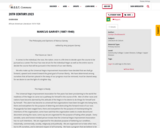
African American Literature 1619-1926
- Subject:
- Literature & Culture
- Material Type:
- Primary Source
- Author:
- Carolyn Shuttlesworth
- Date Added:
- 06/18/2020

African American Literature 1619-1926
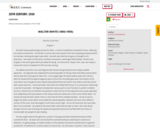
African American Literature 1619-1926
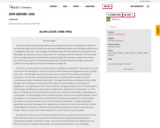
African American Literature 1619-1926
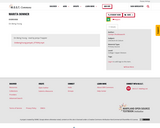
African American Literature 1619-1926
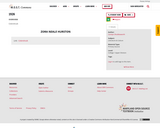
African American Literature 1619-1926

African American Literature 1619-1926


African American Literature 1619-1926
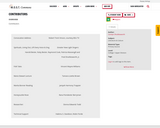
African American Literature 1619-1926

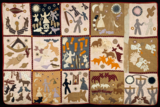
African American Literature 1619-1926
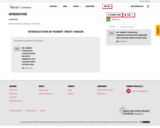
African American Literature 1619-1926
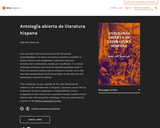
Una antología crítica de textos literarios del mundo hispanohablante. Se enfoca en autores canónicos y también se intenta incluir voces marginadas. Cada texto tiene una introducción y anotaciones creadas por estudiantes.
A critical anthology of literary texts from the Spanish-speaking world. A focus on canonical authors and an attempt to include voices that have been marginalized. Each text includes an introduction and annotations created by students.
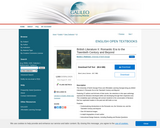
The University of North Georgia Press and Affordable Learning Georgia bring you British Literature II: Romantic Era to the Twentieth Century and Beyond.
Featuring 37 authors and full texts of their works, the selections in this open anthology represent the literature developed within and developing through their respective eras. This completely-open anthology will connect students to the conversation of literature that has captivated readers in the past and still holds us now.
Features:
Contextualizing introductions to the Romantic era; the Victorian era; and the Twentieth Century and beyond.
Over 90 historical images.
In-depth biographies of each author.
Instructional Design features, including Reading and Review Questions.
This textbook is an Open Educational Resource. It can be reused, remixed, and reedited freely without seeking permission.
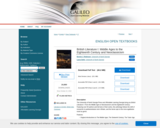
The University of North Georgia Press and Affordable Learning Georgia bring you British Literature I: From the Middle Ages to Neoclassicism and the Eighteenth Century. Featuring over 50 authors and full texts of their works, this anthology follows the shift of monarchic to parliamentarian rule in Britain, and the heroic epic to the more egalitarian novel as genre.
Features:
Original introductions to The Middle Ages; The Sixteenth Century: The Tudor Age; The Seventeenth Century: The Age of Revolution; and Neoclassicism and the Eighteenth Century
Over 100 historical images
Instructional Design, including Reading and Review Questions and Key Terms
Forthcoming ancillary with open-enabled pedagogy, allowing readers to contribute to the project
This textbook is an Open Access Resource. It can be reused, remixed, and reedited freely without seeking permission.
Accessible files with optical character recognition (OCR) and auto-tagging provided by the Center for Inclusive Design and Innovation.
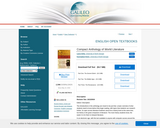
The introductions in this anthology are meant to be just that: a basic overview of what students need to know before they begin reading, with topics that students can research further. An open access literature textbook cannot be a history book at the same time, but history is the great companion of literature: The more history students know, the easier it is for them to interpret literature.
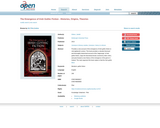
Provides a new account of the emergence of Irish gothic fiction in mid-eighteenth century. This book provides a robustly theorised and thoroughly historicised account of the ‘beginnings’ of Irish gothic fiction, maps the theoretical terrain covered by other critics, and puts forward a new history of the emergence of the genre in Ireland. The main argument the book makes is that the Irish gothic should be read in the context of the split in Irish Anglican public opinion that opened in the 1750s, and seen as a fictional instrument of liberal Anglican opinion in a changing political landscape. By providing a fully historicized account of the beginnings of the genre in Ireland, the book also addresses the theoretical controversies that have bedevilled discussion of the Irish gothic in the 1980s, 1990s and 2000s. The book gives ample space to the critical debate, and rigorously defends a reading of the Irish gothic as an Anglican, Patriot tradition. This reading demonstrates the connections between little-known Irish gothic fictions of the mid-eighteenth century (The Adventures of Miss Sophia Berkley and Longsword), and the Irish gothic tradition more generally, and also the gothic as a genre of global significance. Key Features * Examines gothic texts including Mary Shelley's Frankenstein, Horace Walpole's The Castle of Otranto, Bram Stoker's Dracula, Charles Robert Maturin's Melmoth the Wanderer, (Anon), The Adventures of Miss Sophia Berkley and Thomas Leland's Longsword * Provides a rigorous and robust theory of the Irish Gothic * Reads early Irish gothic fully into the political context of mid-eighteenth century Ireland This title was made Open Access by libraries from around the world through Knowledge Unlatched.
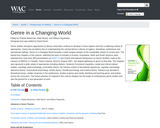
Genre studies and genre approaches to literacy instruction continue to develop in many regions and from a widening variety of approaches. Genre has provided a key to understanding the varying literacy cultures of regions, disciplines, professions and educational settings. Genre in a Changing World provides a wide-ranging sampler of the remarkable variety of current work. The twenty-four chapters in this volume, reflecting the work of scholars in Europe, Australasia, North and South America, were selected from more than 400 presentations at SIGET IV (the Fourth International Symposium on Genre Studies), held on the campus of UNISUL in Tubarão, Santa Catarina, Brazil in August 2007—the largest gathering on genre to that date. The chapters also represent a wide variety of approaches including rhetoric, Systemic Functional Linguistics, media and critical cultural studies, sociology, phenomenology, enunciation theory, the Geneva school of educational sequences, cognitive psychology, relevance theory, sociocultural psychology, activity theory, Gestalt psychology, and schema theory. Sections are devoted to theoretical issues, studies of genres in the professions, studies of genre and media, teaching and learning genre, and writing across the curriculum. The broad selection of material in this volume displays the full range of contemporary genre studies and sets the ground for a next generation of work.
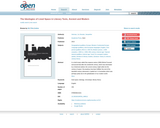
In a brief essay called Des espaces autres (1984) Michel Foucault announced that after the nineteenth century, which was dominated by a historical outlook, the current century might rather be the century of space. His prophecy has been fulfilled: the end of the twentieth century witnessed a ‘spatial turn’ in humanities which was perhaps partly due to the globalisation of our modern world. Inspired by the spatial turn in the humanities, this volume presents a number of essays on the ideological role of space in literary texts. The individual articles analyse ancient and modern literary texts from the angle of the most recent theoretical conceptualisations of space. The focus throughout is on how the experience of space is determined by dominant political, philosophical or religious ideologies and how, in turn, the description of spaces in literature is employed to express, broadcast or deconstruct this experience. By bringing together ancient and modern, mostly postcolonial texts, this volume hopes to stimulate discussion among disciplines and across continents. Among the authors discussed are: Homer, Nonnus, Alcaeus of Lesbos, Apollonius of Rhodes, Vergil, Herodotus, Panagiotis Soutsos, Assia Djebar, Tahar Djaout, Olive Senior, Jamaica Kincaid, Stefan Heym, Benoit Dutuertre, Henrik Stangerup and David Malouf.
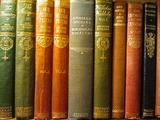
This project was part of the Western Maryland M.O.S.T. Institutional Grant (2020). While it focuses primarily on a 100-level Introduction to Literature course, the open resource and subsequent assignments could easily be adapted for upper-level undergraduate literature courses. Furthermore, the design of this project allows instructors to continue to utilize texts with which they are most familiar.